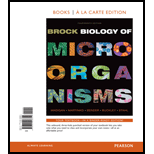
Laboratory-associated infections (LAIs) are also known as laboratory-acquired infections or occupational illness. LAIs may arise in clinical laboratories, animal facilities, and also in production installations. LAIs are of community health concern, as an infected worker may transmit the infection to his relatives, colleagues, and family members. In the United States (U.S) about 500,000 laboratory workers are at risk of exposure to contagious agents, which may cause diseases that vary from mild to life-threatening infections.
Explanation of Solution
The laboratory-associated infections are majorly contracted because of carelessness and safety procedure ignorance in the clinical laboratory.
The actions to be taken to inhibit the laboratory infections is described below:
- Risk assessment guidelines that comprised of the pathogenicity of the contagious agent, mode of transmission, source and route of infection, and worker-related risk factors.
- Restrict access, only laboratory workers and trained personnel should have the access.
- Maintain personal hygiene such as hand washing practices; avoid drinking, eating, applying cosmetics, and manipulating contact lenses in the laboratory.
- Using personal protective equipment’s such as wearing lab coats, eye protection, and gloves.
- Laboratory workers should properly vaccinate against pathogenic agents to which they are frequently exposed.
- Employee educations about the occupational risks, and accessibility of an employee health program.
- Decontaminating the processed samples and utensils after exposure to the infectious agents by incinerating, disinfecting, and autoclaving.
- Strict adherence to the biosafety guiding principles authorized or proposed by the government as well as accrediting agencies.
Want to see more full solutions like this?
Chapter 27 Solutions
Brock Biology of Microorganisms, Books a la Carte Edition (14th Edition)
- Q How is Neisseria meningitides typically transmittedand what are the symptoms of full-blown meningitiscaused by this bacterium?arrow_forwardExplain the concept of portal of entry, and list the major portals ofentry with examples of associated infections.arrow_forward1. What is the best antibiotic for treating a UTI?arrow_forward
- a. Suggest several reasons why respiratory, surgical, and gastrointestinalinfections are the most common health-care-associated infections.b. Name several measures that health care providers must exercise atall times to prevent or reduce these types of infections.arrow_forwardQ.No.2. Explain the observations that different pathogens infect different parts of the hostarrow_forwardI. What is the difference of TB, PTB, MDR-TB and XDR-TB?arrow_forward
- Explain 10 ways the human body prevents infectionsarrow_forwardExplain what is happening during each stage of infection. Compare and contrast: systemic, local, and focal infections; primary versus secondary infections; infection versus intoxication.arrow_forwardDiscuss important aspects of health-care-associated infections andtheir impact on patients in clinical settings.arrow_forward
 Biology (MindTap Course List)BiologyISBN:9781337392938Author:Eldra Solomon, Charles Martin, Diana W. Martin, Linda R. BergPublisher:Cengage Learning
Biology (MindTap Course List)BiologyISBN:9781337392938Author:Eldra Solomon, Charles Martin, Diana W. Martin, Linda R. BergPublisher:Cengage Learning

